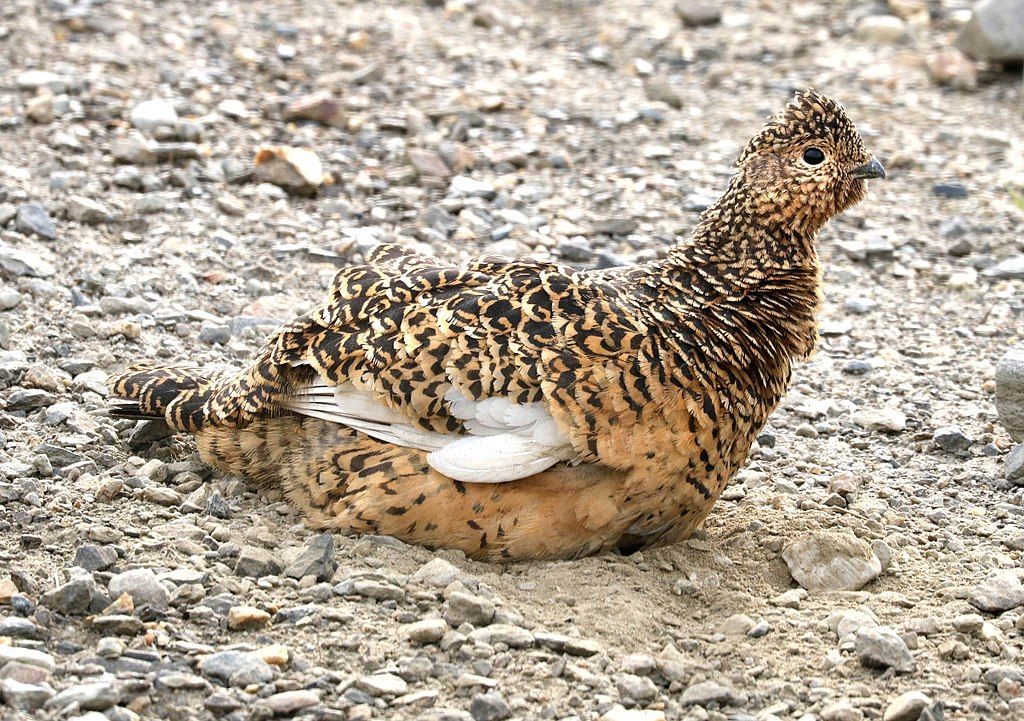
Alaska Birding with PIB: Nome to Anchorage 23 June 2019
Most people never see a wild gyrfalcon (Falco rusticolus), the world’s largest falcon and most northern diurnal raptor. Though gyrfalcons have a circumpolar distribution through North America, Greenland, Iceland and Eurasia, they rarely come south, even in winter. Their remoteness protected them from the past persecution of raptors and made them prized as falconers’ birds.
Compared to peregrine falcons, gyrfalcons have larger heads, thicker necks, bulkier deep chests, shorter and broader wings, and a longer tail. Gyrfalcons look like powerful prize fighters, peregrines are sleek and fast.
Gyrfalcons need this bulk because their prey items are much larger birds than peregrines eat. Gyrfalcons can kill cranes and Canada geese but their primary prey are ptarmigans, especially rock ptarmigans. In some regions the gyrfalcon population is cyclic in response to the ptarmigan population. Climate change is affecting the ptarmigan population — bad news for gyrfalcons.
We think of gyrs as white falcons because that’s what we see in the media but there’s a lot of color variation. Many are brown-speckled, like the bird in Iceland on the right.

Most gyrfalcons in North America are a uniform dark brown, like this one that spent the winter of 2001-2002 at the Black Falcon Terminal (dock) in Boston, Massachusetts. This bird was so famous and so reliably found that 17 years later there are still photos of it online. Glen Tepke took this picture on 16 February 2002.
I mention this individual bird because I traveled to see it — the only gyrfalcon I’d ever seen until my trip to Alaska. It shows how rare they are in the eastern U.S.
Gyrfalcons live in Alaska year round and breed here in early summer. Yesterday we saw a gyrfalcon family with 3 or 4 young in the nest. The young were nearly ready to fledge — at the ‘pantaloons’ stage — very dark brown. They were definitely Best Birds!
Last year a pair nested in Nome, photographed in June 2018 by Mick Thompson.

To learn more about gyrfalcons and see one fly, watch this video of falconer Brian Bradley and his bird at White Memorial Conservation Center in Litchfield, Connecticut.
As you can see, gyrfalcons are not always white.
(photos credits: Tim Lenz via Flicker Creative Commons license, Wikimedia Commons, Black Falcon photo courtesy Glen Tepke, Mick Thompson via Flickr Creative Commons license. Click on the captions to see the originals)






































